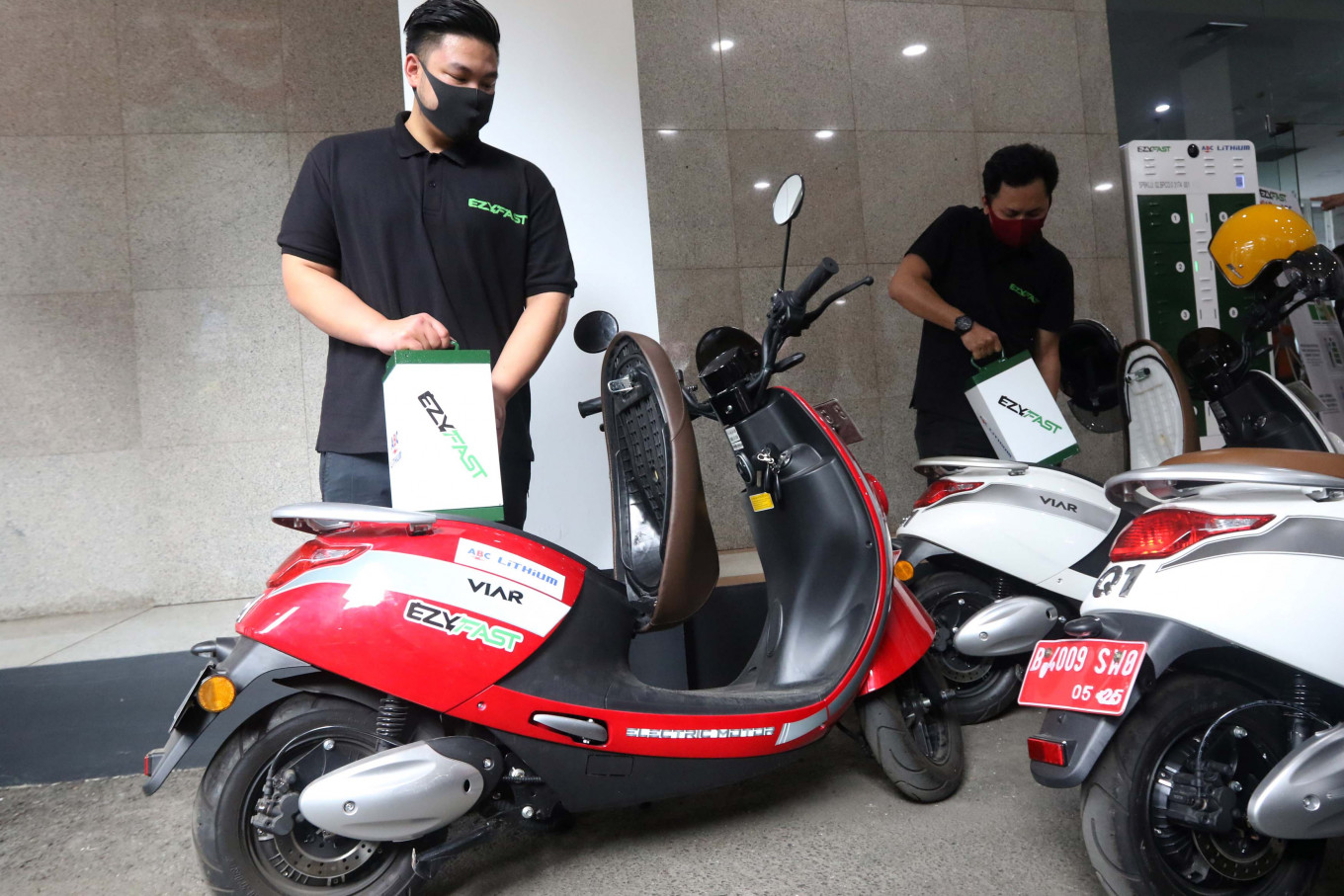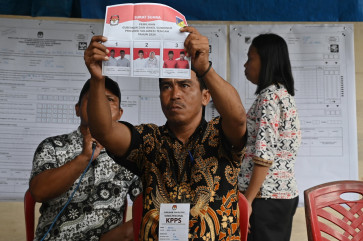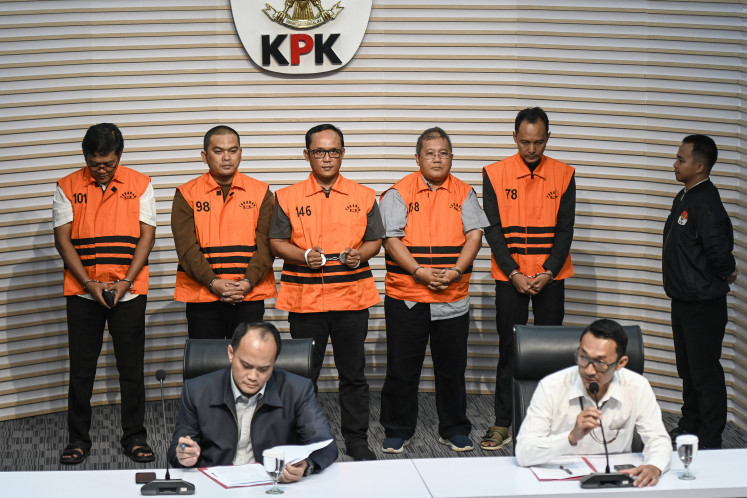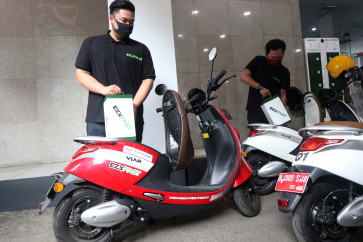Popular Reads
Top Results
Can't find what you're looking for?
View all search resultsPopular Reads
Top Results
Can't find what you're looking for?
View all search resultsAnalysis: Govt to ease requirements for electric motorcycle subsidy
The Indonesian government’s subsidy program for electric motorcycles has faced a slow uptake since it was first introduced on March 20. It is a blow to what was aimed to speed up the mass adoption of electric vehicles (EVs) in the country.
Change text size
Gift Premium Articles
to Anyone
 Officers exchange electric motorcycle batteries at Public Electric Vehicle Battery Exchange Station (SPBKLU) in Electrification Director General building, Jakarta, on Monday, August 31, 2020. The testing of battery exchange devices was conducted to encourage people to choose electric vehicles than oil-powered motorcycle and it is hoped that many private companies will support the establishment of SPBKLU so it can be installed in many places across the town. (JP/Dhoni Setiawan/Adi/Dyn)
Officers exchange electric motorcycle batteries at Public Electric Vehicle Battery Exchange Station (SPBKLU) in Electrification Director General building, Jakarta, on Monday, August 31, 2020. The testing of battery exchange devices was conducted to encourage people to choose electric vehicles than oil-powered motorcycle and it is hoped that many private companies will support the establishment of SPBKLU so it can be installed in many places across the town. (JP/Dhoni Setiawan/Adi/Dyn)
T
he Indonesian government’s subsidy program for electric motorcycles has faced a slow uptake since it was first introduced on March 20. It is a blow to what was aimed to speed up the mass adoption of electric vehicles (EVs) in the country. Now, the government is looking to revise the program’s scheme to get it back on track.
Previously, Industry Minister Agus Gumiwang Kartasismita announced that the subsidies would cover the purchase of 200,000 new electric motorcycles and the conversion of 50,000 conventional two-wheelers to electric ones until the end of the year. Each electric motorcycle purchase or conversion would receive assistance amounting to Rp 7 million (US$467), with Rp 1.75 trillion in supporting funds from the Finance Ministry.
However, the government subsidy has developed less than expected, with the Industry Ministry admitting that only a handful of people were willing to take advantage of it. As of Aug. 2, data from SISAPIRa, the government website used to monitor the subsidy realization, showed that 1,207 people had registered for the subsidy with another 200 people already verified but have yet to acquire the assistance.
Additional setbacks also occurred in the subsidy’s initiation as the program did not become effective until May 10, despite being scheduled for implementation on March 20. PT Surveyor Indonesia commercial director Saifuddin Wijaya explained that obstacles were found in the verification process for the electric motorcycle manufacturers’ factories as well as the electric motorcycle dealers’ processes in adapting the program.
The slow uptake has been caused in part by the various limitations imposed by the government. The subsidy, expected to run until 2024, had only been available to selected groups of people, namely recipients of small-and-micro enterprise (SME) business credit (KUR), micro business productive assistance (BPUM), wage subsidy assistance and electricity subsidies. Particular attention had been placed on lower-income earners as the government wanted to ensure fairness in terms of the subsidy’s beneficiaries. Agus mentioned that, as a result, sales of the subsidized electric motorcycles were limited.
As an evaluation of the subsidy program is underway, a limited ministerial meeting with President Joko “Jokowi” Widodo on July 31 resulted in the decision to remove the subsidy’s beneficiary eligibility requirements. Following the meeting, Agus explained that a new and simplified requirement will take effect, allowing one citizenship identification number (NIK) or ID card (KTP) to purchase only one electric motorcycle. This change will allow the subsidy program accessible to the public.
Efforts to accelerate the development of the EV ecosystem in Indonesia are not only limited to the electric motorcycle subsidy program. Minister Agus said the government would also introduce a new policy to attract adoption of electric cars by waiving the value-added tax on completely built imported electric cars. The government will also push back the implementation of local content requirement (TKDN) for electric cars to woo more EV investors to invest in Indonesia.


















